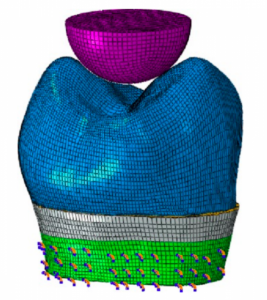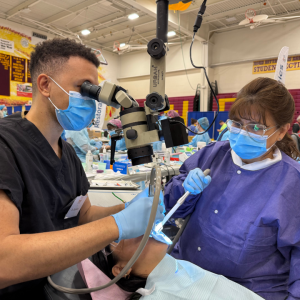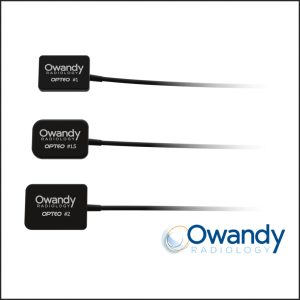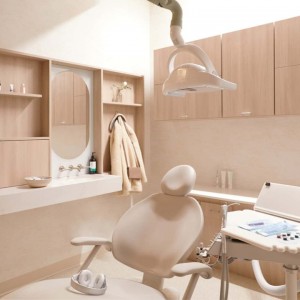
Ceramic crowns and their finishing line: a systematic review
Edoardo Mancuso
In ceramic full coverage indirect restoration marginal and internal adaptations have been shown to be a key factor for clinical success. Indeed, poor adaptation of restorations can result in cement dissolution, microleakage, and increased plaque retention, potentially leading to caries and periodontal disease. In addition, the fracture strength of ceramic crowns can be influenced by poor marginal and internal adaptations due to higher stress concentrations at the margins and internal surfaces.
Marginal adaptation is influenced by four main factors: finish-line configuration, value of the cementing space, veneering process, and occurrence of cementation. Whilst the other factors are out of the dentists’ control, the finishing-line configuration is, and although tooth preparation is part of daily routine, dentists often select the cervical finish line based on their experience and personal choice.
In the era of minimally invasive dentistry, more conservative preparation geometries, such as chamfer, should be preferred than the rounded shoulder. However, which finish line offers better marginal and internal adaptations is still not well defined.
In this regard, an interesting systematic review, written by Professor Hao Yu has been published in the Journal of Prosthetic Dentistry with the aim of evaluating the influences of rounded shoulder and chamfer on the marginal and internal adaptations of ceramic crowns.
Material and methods
For the review, a systematic electronic literature search was conducted in different electronic databases. The articles included met the following inclusion criteria: studies that evaluated the marginal and/or internal adaptations of ceramic crowns; studies that evaluated restorations with rounded shoulder and chamfer finish lines; and studies including well-described marginal and/or internal adaptation measurements.
Results
Among 283 potentially relevant studies, 24 were selected for full-text analysis, and 16 were included in the systematic review and the meta-analysis. All 16 studies were considered in the meta-analysis of marginal adaptation, whereas 4 were considered in the analysis of internal adaptation.
The results showed a significant difference in marginal adaptation between the restorations with rounded shoulder and those with chamfer finish lines, favoring rounded shoulder.
A significant difference in internal adaptation between the crowns with rounded shoulder and those with chamfer finish lines, favoring chamfer.
Discussion
From the analysis conducted in the review a minor but statistically significant difference in marginal adaptation was detected, favoring the rounded shoulder. The authors suggest that this might be due to the complicated production of the tilted surfaces of the chamfer finish line. Moreover, compared with a rounded shoulder finish line, among the studies included in the review, more fractures were observed at the margins of crowns with chamfer finish lines. The authors attribute this trend to the manufacturing procedures. As a matter of fact, during coping design, the marginal adjustment process in the dental laboratory is much more complicated to perform when there is a chamfer finish line.
The analysis showed a significant difference in internal adaptation between the crowns with rounded shoulder and those with chamfer finish lines. The authors correlated the relatively better seating of restorations with chamfer preparation with their poor marginal sealing. They suggest that the design of chamfer allows the cement to escape marginally more readily without filtration, whereas with the rounded shoulder, the margins seal earlier and the emission of the cement could be hindered.
Conclusion
The systematic review concludes drawing the following results:
1. Ceramic crowns with chamfer finish lines showed wider marginal gaps than those with rounded shoulder finish lines (MD=−7.8; 95% CI=−11.6 to −4.1).
2. Ceramic crowns with rounded shoulder finish lines showed wider internal gaps than those with chamfer finish lines (MD=35.0; 95% CI=6.5 to 63.5).
When preparing a tooth for a ceramic crown it seems to be preferable the choice of a chamfer finish line. Restorations with chamfer finish lines have in fact resulted in an inferior reduction of tooth substrates and have exhibited better internal adaptation and comparable marginal adaptation than those with rounded shoulder finish lines.
 Tag
Tag
 Related articles
Related articles
Authors: Storelli S, Palandrani G, Scanferla M, Viera D, Romeo E
The dental materials suitable for oral rehabilitation have rapidly evolved over time.GoldAlloys to ceramic crowns were produced for several decades using a lost-wax casting procedure for the...
Digital Dentistry 20 November 2019
Premolars are the most difficult elements to restore and have a high failure rate due to their anatomical position and the forces they undergo. Therefore the choice of the material to restore...
 Read more
Read more
Endodontics 16 October 2025
Endodontic or dental implant therapy: The factors affecting treatment planning
Clinicians are confronted with difficult choices regarding whether a tooth with pulpal and/or periapical disease should be saved through endodontic treatment or be extracted and replaced with an...
Endodontist Brandon Barnett was set to focus his health law project at Yale School of Public Health on access to care through Medicaid.
News 16 October 2025
Owandy Radiology Inc., a global leader in the manufacture of dental radiology hardware and imaging software, recently introduced its latest innovation, the 3rd-generation Opteo Intraoral Sensor,...
News 16 October 2025
Dental Revenue, a national leader in dental marketing solutions, is proud to announce a new partnership with Harbor Dental Society, a trusted resource.
News 16 October 2025
Tend, the innovative dental company that redesigns the dental care experience, is raising the bar for dentist compensation to combat industry-wide challenges such.












